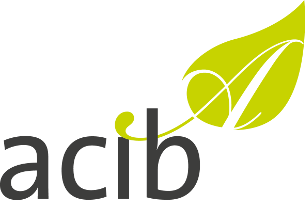CHO-Epigenome Database:
The data presented here were published in
Comprehensive genome and epigenome characterisation of CHO cells in response to evolutionary pressure and over time
by Julia Feichtinger, Inmaculada Hernández, Christoph Fischer, Michael Hanscho, Norbert Auer, Matthias Hackl, Vaibhav Jadhav, Martina Baumann, Peter M. Krempl, Christian Schmidl, Matthias Farlik, Michael Schuster, Angelika Merkel, Andreas Sommer, Simon Heath, Daniel Rico, Christoph Bock, Gerhard G. Thallinger and Nicole Borth
Biotechnology and Bioengineering 2016 DOI: 10.1002/bit.25990
and
Epigenetic regulation of gene expression in Chinese Hamster Ovary cells in response to the changing environment of a batch culture
by Inmaculada Hernández, Heena Dhiman, Gerald Klanert, Vaibhav Jadhav, Norbert Auer, Michael Hanscho, Martina Baumann, Anna Esteve-Codina, Marc Dabad, Jessica Gómez, Tyler Alioto, Angelika Merkel, Emanuele Raineri, Simon Heath, Daniel Rico and Nicole Borth
Biotechnology and Bioengineering 2018 DOI: 10.1002/bit.26891
Cell Line Relationship:

ChIP Seq Data:
ChIP-Seq peak calling was performed with MACSv2.0.10. Both the standard method for H3K4me3 and H3K27ac and the –broad flag method for H3K4me1, H3K27me3, H3K36me3, H3K4me9 with default parameters were used. All samples were normalized by sequencing depth in million reads. Browser shows treat_pileup.bigWig files and the corresponding peaks.broadPeak or peaks.narrowPeak files.
Chromatin states were learned by applying the ChromHMM hidden Markov Model v1.10. An 11 state model was trained with the full data set. Each time point was segmented using the 11 state model. Browser shows dense view of segmentation for each time point.
| State | Color | H3K27ac | H3K4me3 | H3K4me1 | H3K36me3 | H3K9me3 | H3K27me3 | State (Emission order) | |
|---|---|---|---|---|---|---|---|---|---|
| 1. Repressed heterochromatin (H3K9me3) | |||||||||
| 2. Quiescent/low | |||||||||
| 3. Polycomb repressed regions (H3K27me3) | |||||||||
| 4. Strong transcription (H3K36me3) | |||||||||
| 5. Genic enhancer | |||||||||
| 6. Enhancer (H3K27ac low) | |||||||||
| 7. Enhancer (H3K27ac high) | |||||||||
| 8. Regulatory element | |||||||||
| 9. Active promoter (H3K27ac high) | |||||||||
| 10. Active promoter (H3K27ac low) | |||||||||
| 11. Flanking TSS |

